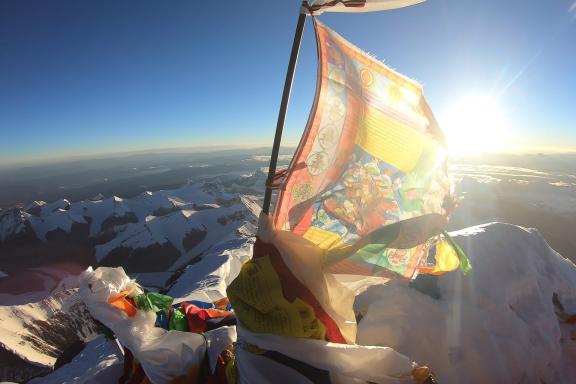© Yorick Vion
Everest, the roof of the world at 8849 meters, remains the dream of many a mountaineer, despite the criticism of its organization, which increases every year. The last few seasons have seen some serious changes in the number and value of climbers visiting the mountain. For now, in this article, we look back at the recently concluded Spring 2024 season, during which, for the first time since 2019, the Tibetan North Face was also accessible. Weather windows, summit push, number of permits and percentage of summiters on the Nepalese and Tibetan sides, highlights... Everything worth remembering about this 2024 Everest mountaineering season.
600 summiters on Everest South Nepal side

© Expeditions Unlimited
According to the accounts kept by Alan Arnette, the Everest reference source, almost 600 climbers reached the summit of Everest via the Nepalese side, including 250 clients for 350 sherpas, i.e. a ratio of one client for 1.4 sherpas. Given that 421 permits have been issued for this season (sherpas do not need permits), this represents a customer success rate of 250 out of 421, i.e. almost 59%, which is quite favourable.
By way of comparison, in 2022, accoring to the Himalayan database in Kathmandu founded by Elizabeth Hawley,we had 671 summiters, including 257 clients and 333 permits issued, i.e. a success rate of 77% with exceptional weather and a ratio of one client to 1.8 sherpa. In 2000, 118 permits were issued, for a customer success rate of 30% (35 summiters) and a ratio of one customer to 1.1 sherpa.
The clear improvement in the Everest success rate year after year is due to a higher supervision ratio (number of sherpas/client), the use of oxygen earlier and earlier (lower and lower), and improved equipment and weather forecasting.
Last but not least, the price of a climbing permit on the Nepalese side is set to rise from US$11,000 to US$15,000 by 2025.
100 summiters on the Everest North Tibetan side

© Jérôme Brisebourg
On the Tibetan side, it was the first time that non-Chinese had been able to return to the north face of the mountain since 2019. We estimate that around 150 climbing permits have been granted for the spring of 2024.
Unfortunately, for consular and administrative reasons, the teams did not have access to Tibet until around May 10, almost 2-3 weeks later than usual.
The teams therefore acclimatized in Nepal on the Mera, Island and Lobuche peaks, as well as on Ama Dablam. And a good number of them, faced with the uncertainty of the Chinese opening, gave up on the Tibetan side and opted for the Nepalese side, or simply postponed their expedition until next year.
For those who remained in the running, which we estimate at less than half (3 foreign teams), we had some 44 summiters, including 19 clients and 24 sherpas, i.e. a success rate probably in excess of 60/70% and a supervision ratio of one client to 1.3 sherpas.
In addition, 31 Chinese climbers accompanied by an equivalent number of Tibetan guides reached the summit of Everest, just as non Chinese mountaineers were allowed to enter China.
In contrast to Nepal, Tibet has drastically reduced the number of permits granted to foreigners since the 2000s, when the figure was as high as 300.
Finally, it's worth noting that, for the coming seasons, anyone wishing to climb a Tibetan peak (Everest, Cho Oyu, Shishapangma) must apply well in advance - at least six months in the case of Everest.
Everest 2024 season highlights
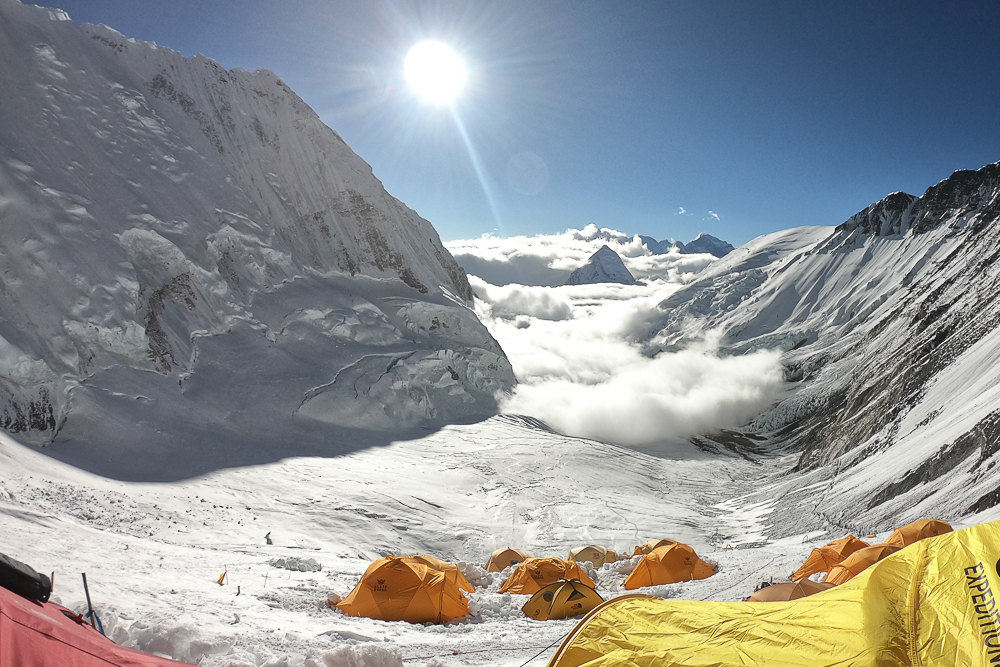
© Yorick Vion
The first summits on the Nepal side were reached on May 11, in what remains a classic for this route, after the fixed ropes had been installed the day before by the Seven Summits sherpa teams in particular. A few days earlier, the Tibetan rope team had established the summit route on the north face, enabling the Chinese groups to reach the summit.
The weather was perhaps a little more difficult this year, with quite a few windy days, unlike, for example, 2022, where a long period of fine weather resulted in a success rate of almost 74%. That said, 2024 is still much better than 2021, when two cyclones worsened conditions, resulting in a success rate of just 45%.
All in all, however, we saw the two traditional summit push periods, May 10-15 and May 20-27.
A sign of the times, or rather of global warming, with the Nepalese winter warmer and drier than usual, it was more difficult to get the fixed ropes through the icefall this season, and a ledge at the Hillary step collapsed, dragging the climbers with it. The south-east ridge accumulates difficulties.
Firstly, at the beginning of May, the Icefall Doctors tried with great difficulty to find a route for the fixed ropes and ladders through the Khumbu Icefall, which they finally found, but it was a non-direct route and particularly long, requiring an extra three to five hours to reach camp 1 at 6000 meters altitude.
Then, a long line of some fifty climbers overcame the Hillary ledge, causing a cornice overlooking the Kangshung face to collapse. Several people fell and were saved by the fixed rope, with the exception of British climber Daniel Paul Paterson, who was never found. Seven other people died this year, compared with eighteen in 2023.
While Tibet is ahead of the game in the environmental constraints it imposes on expedition organizers (number of permits, taxes and waste collection processes, etc.), Nepal tries to make progress on the subject every year, with little success. This year's proposals included limiting the number of permits, requiring climbers to bring down their faeces, requiring them to bring down at least 8 kilos of waste, banning helicopters from transporting equipment to high-altitude camps, and so on. As far as we know, little or nothing has been done.
At the end of April, three oxygen cylinders and 1.5 kg of equipment were delivered by drone to Camp 1 (6000 m) from Base Camp (5300 m). This was a first.
Our confirmed departures for the ascent of Everest in 2025
- Climb mount Everest at 8849 meters South Nepal side
- Climb mount Everest at 8849 meters North Tibet side
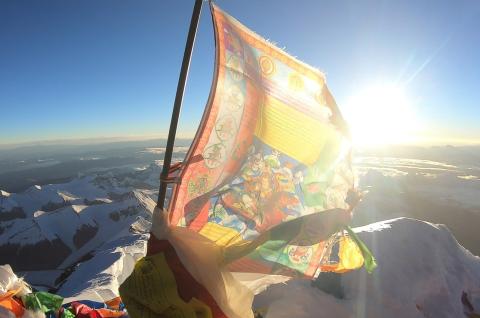
Climb mount Everest at 8849 meters South Nepal side
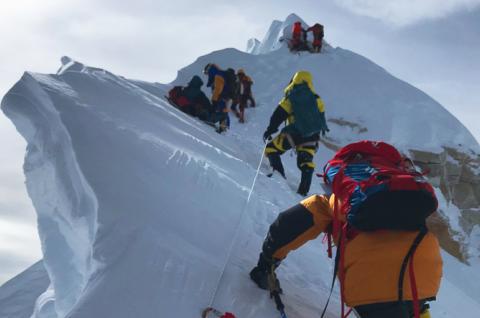
Climb Manaslu at 8163 meters in Nepal
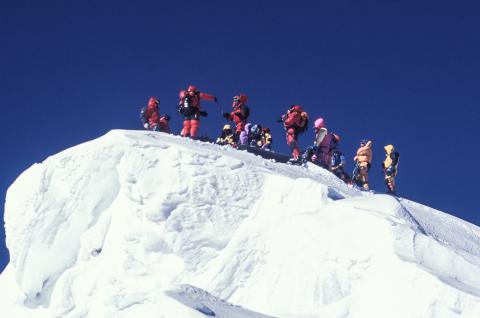

 Expeditions Unlimited blog
Expeditions Unlimited blog